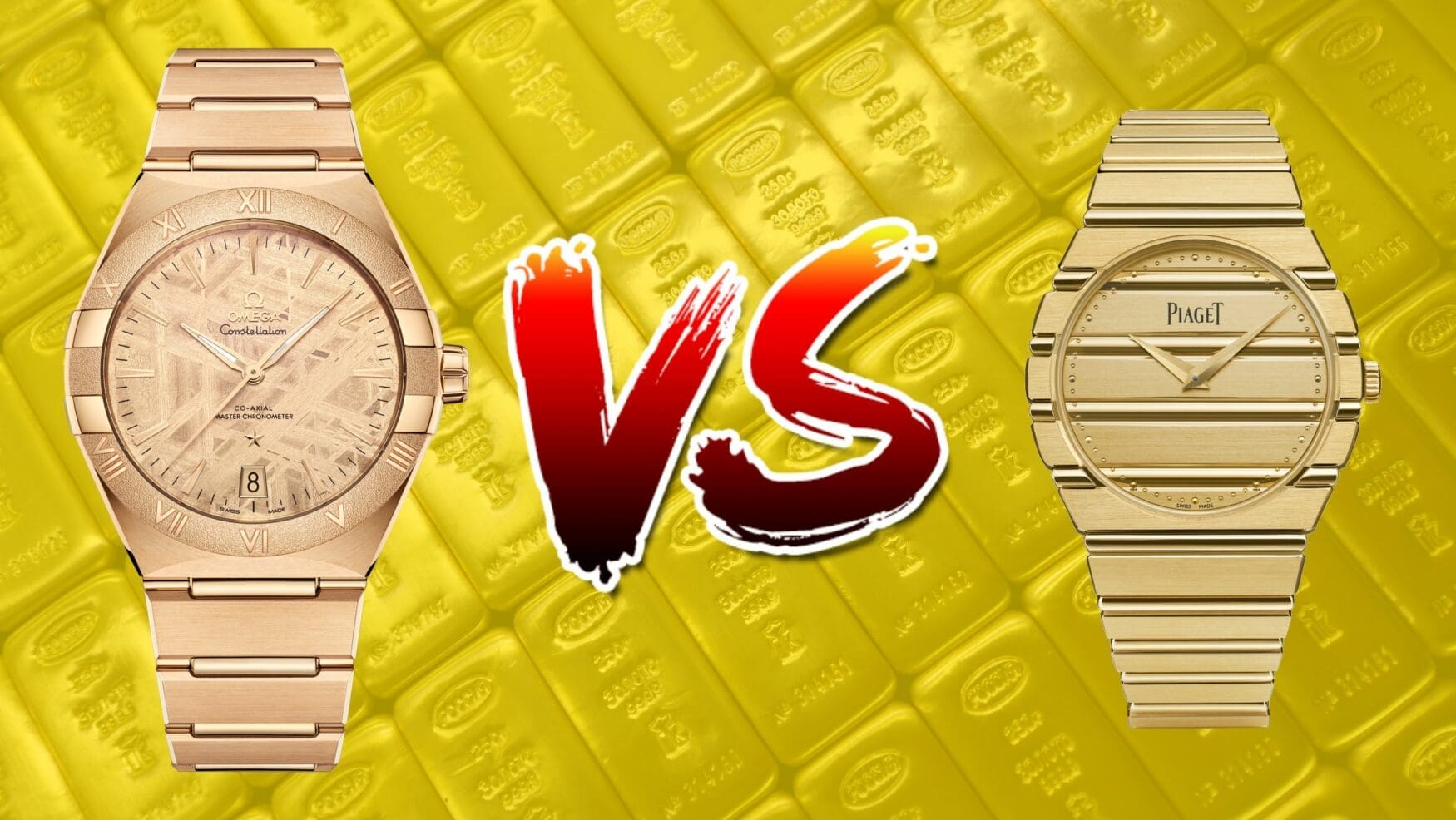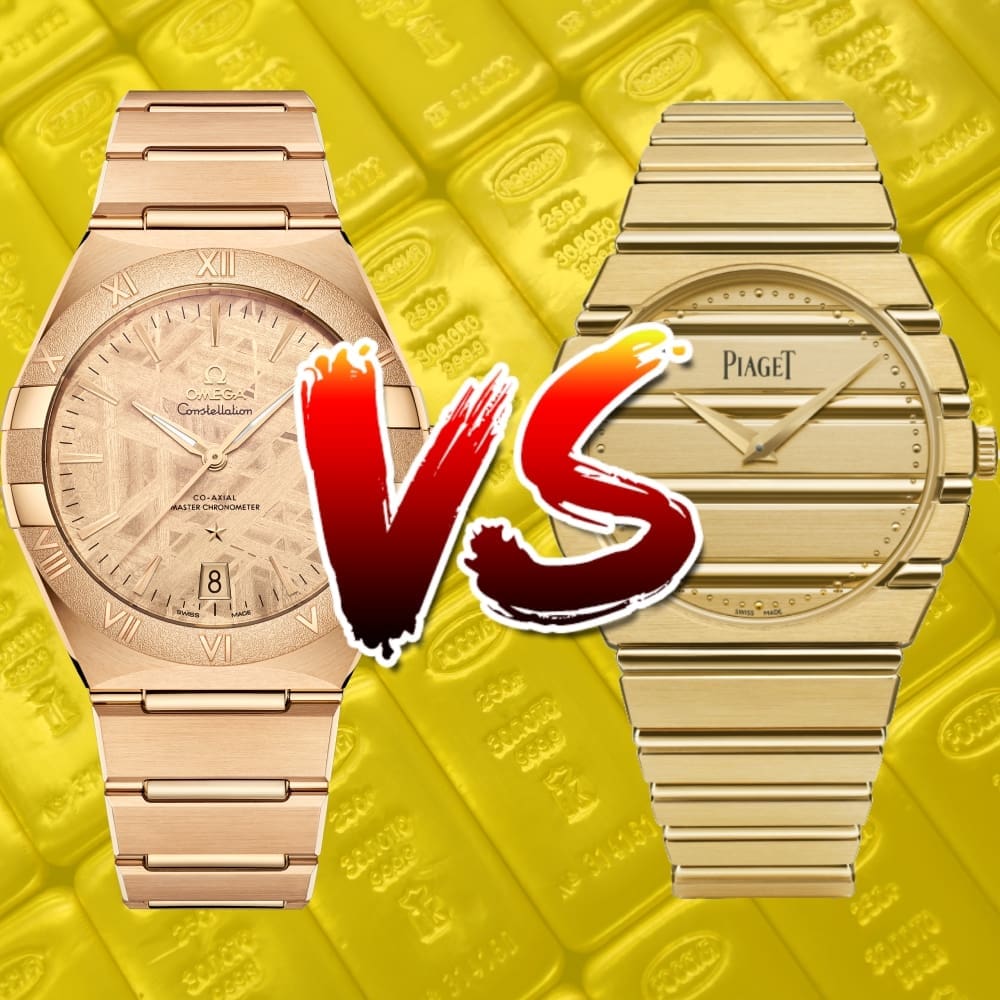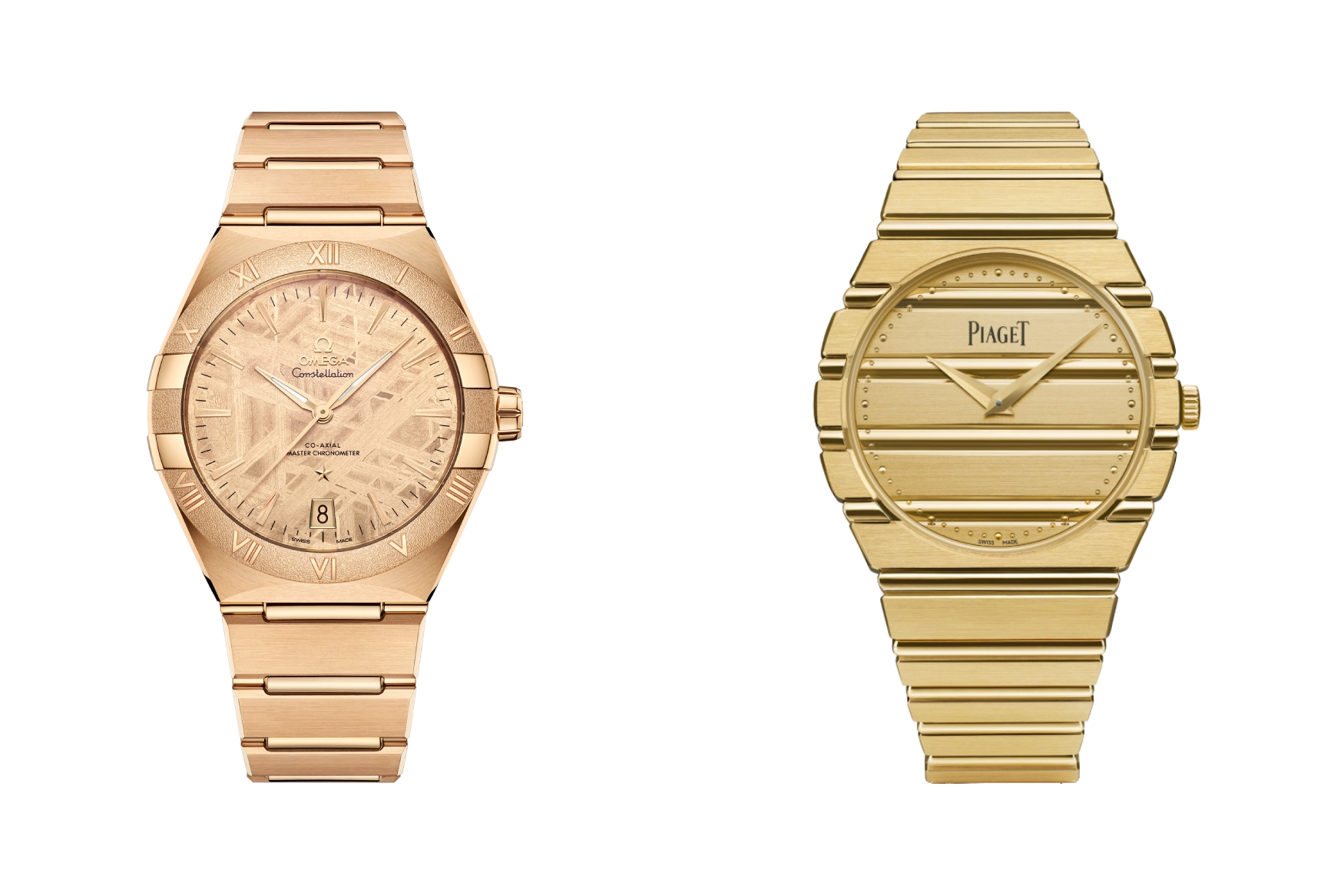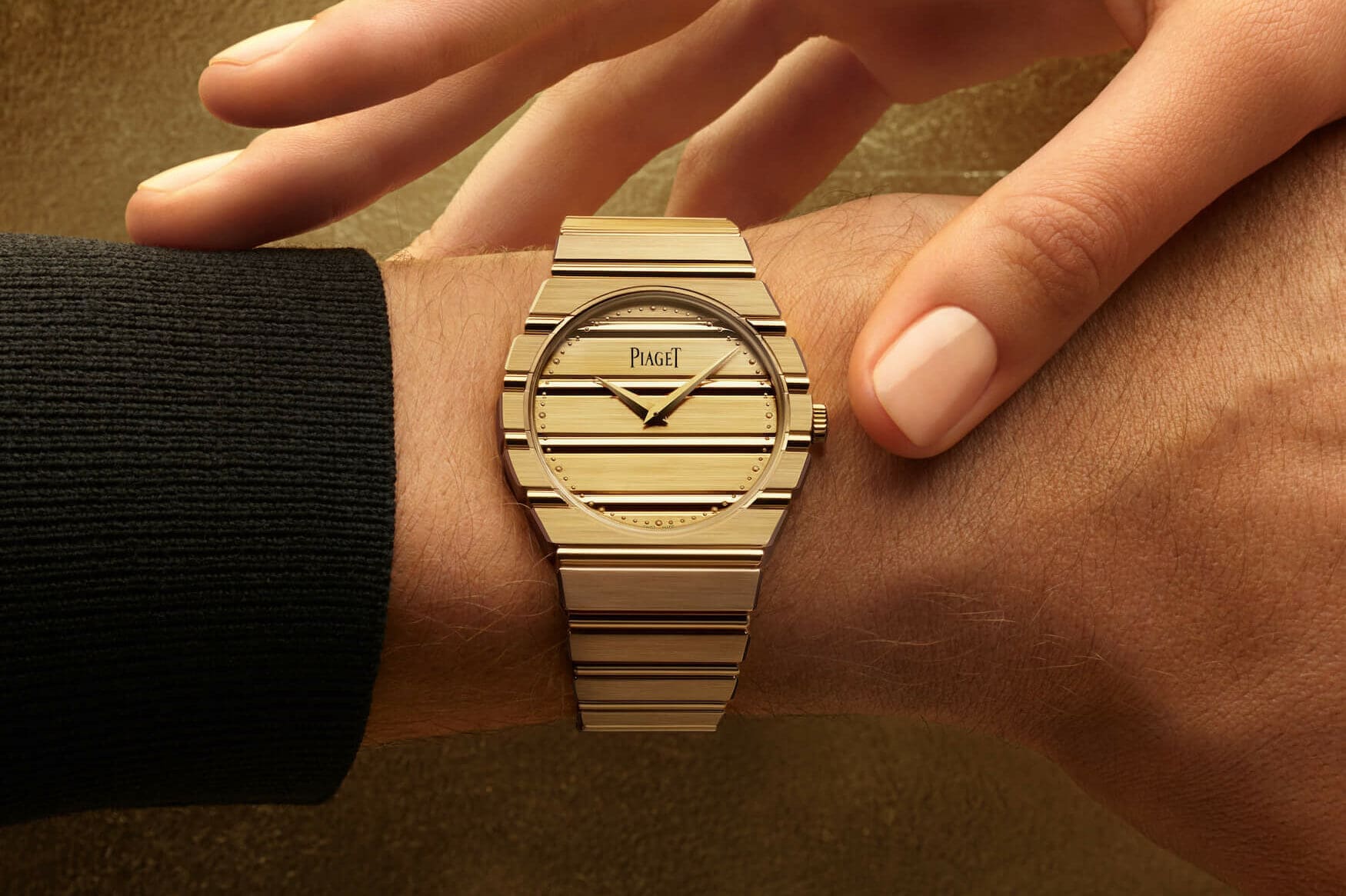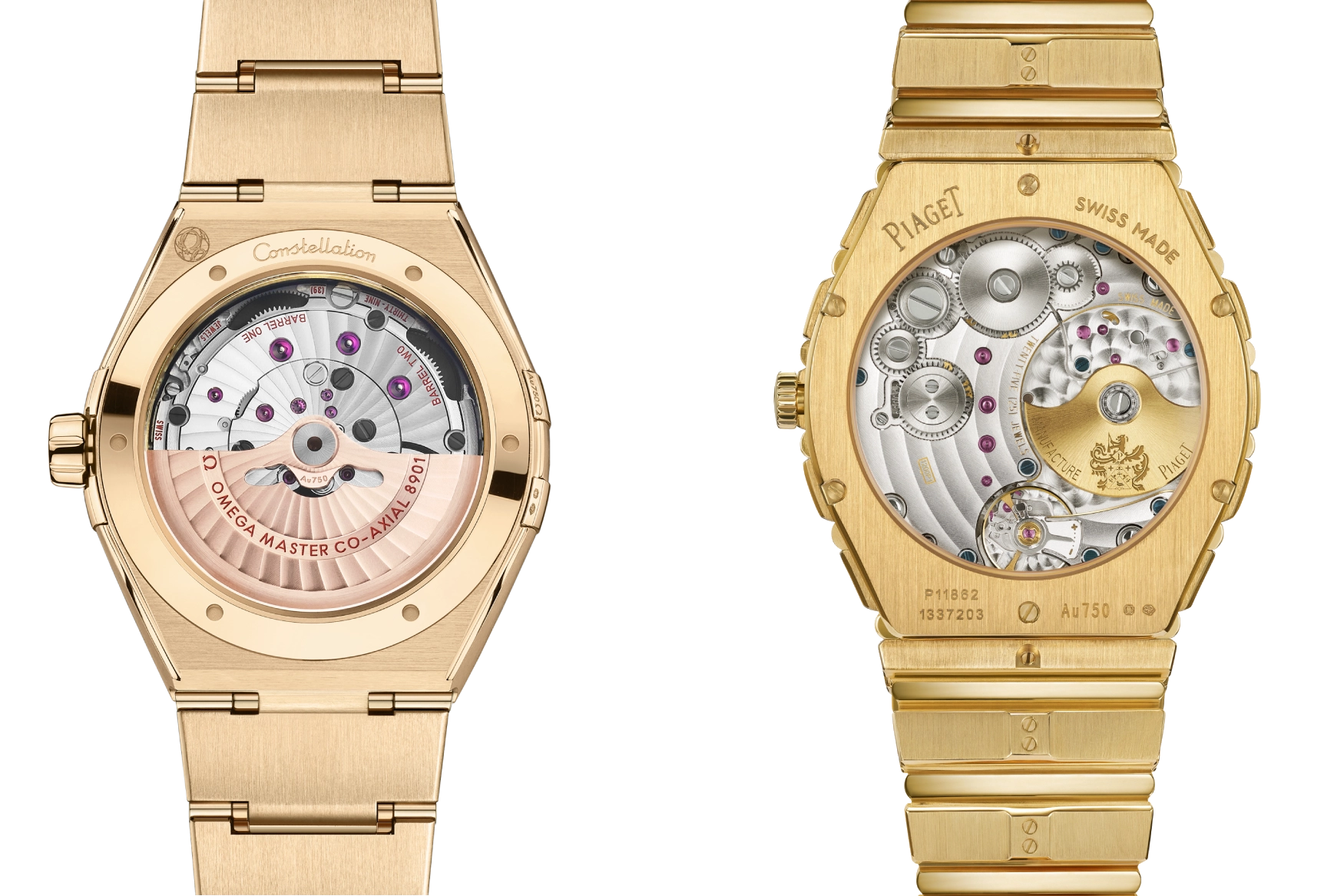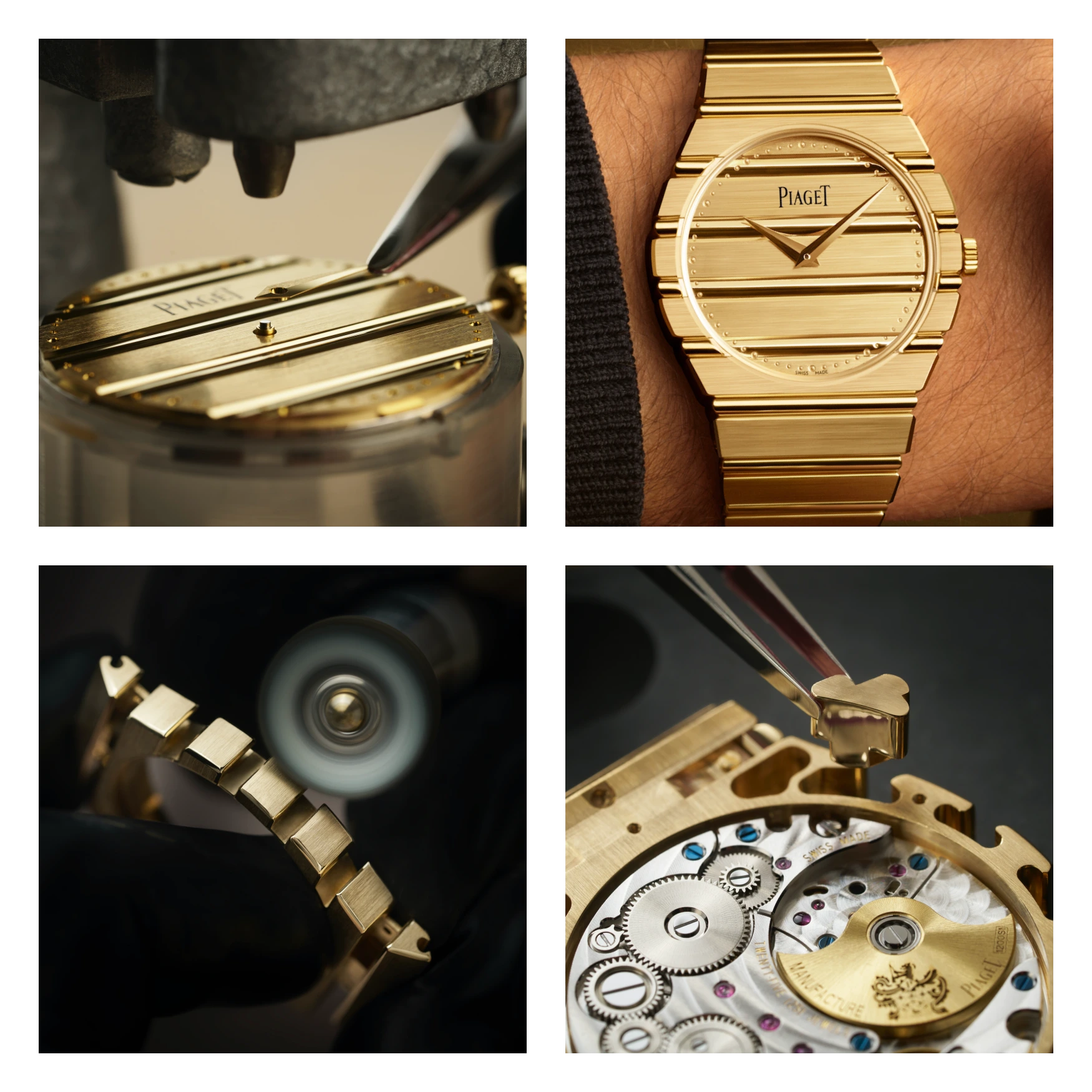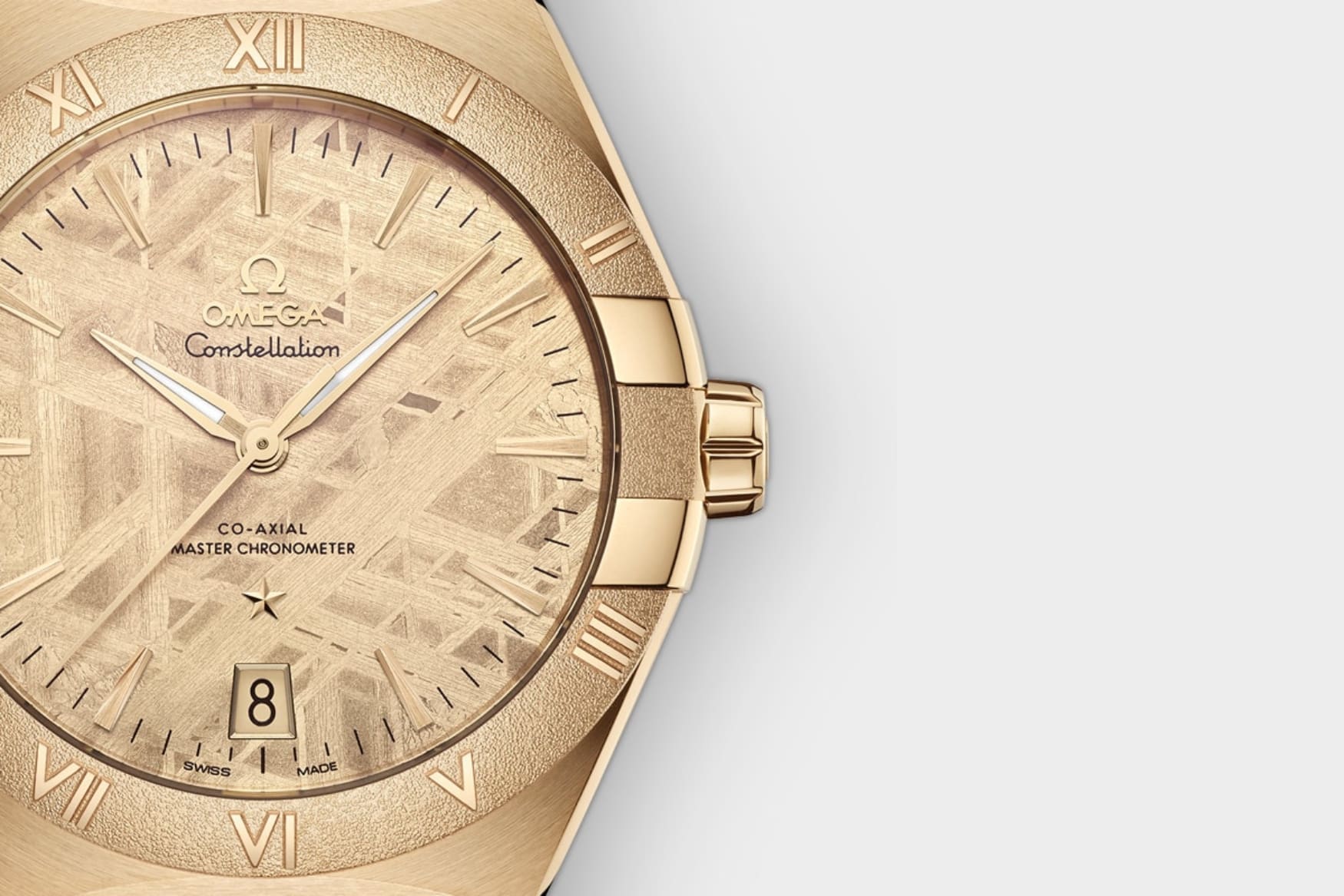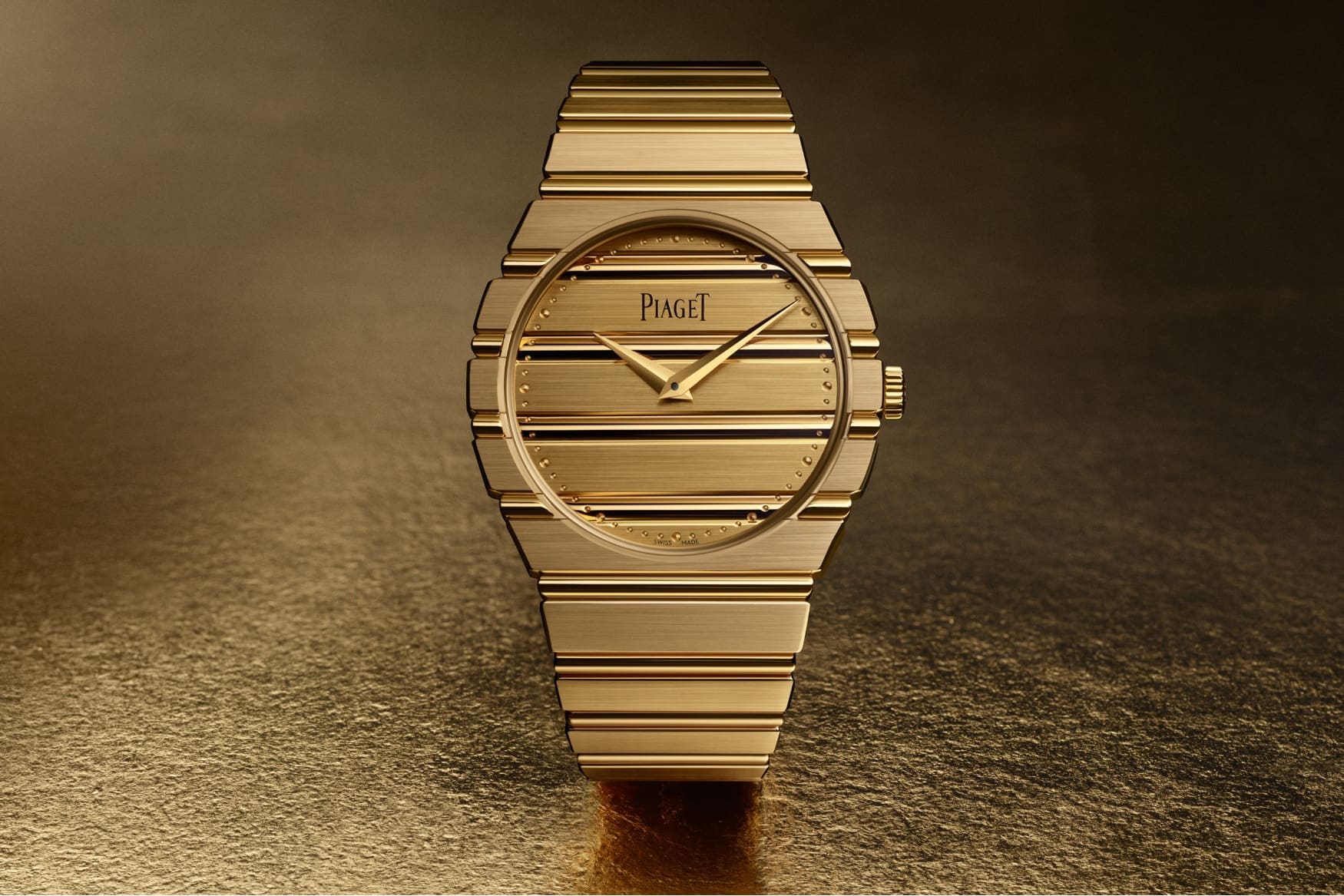Is this meteorite dial Omega Constellation a more accessible alternative to the Piaget Polo 79?
Jamie WeissThe watch industry is an Ouroboros of redesigns and reissues: notable watch designs of yesteryear are constantly being nodded to or revived. Indeed, some of the most hype-generating watch releases in recent memory have been modern revivals of popular vintage designs – the Tissot PRX and Vacheron Constantin Historiques 222 immediately spring to mind. Both those watches also happen to feature integrated bracelets, a vintage look that’s been receiving plenty of interest currently.
Another integrated luxury sports watch we’ve seen get revived recently is the original Piaget Polo, which Piaget has brought back as the Piaget Polo 79. Boasting a micro-rotor automatic movement and a slightly larger case than the OG Polo, which featured a quartz movement, the Polo 79 is an ultra-luxurious style statement that follows the revived 222’s blueprint. However, at a whopping A$120,000, it’s not particularly accessible. But could a recently released meteorite dial Omega Constellation offer a similar look and luxurious experience for almost half the price?
| Brand | Omega | Piaget |
| Model | Constellation 41mm Co-Axial Master Chronometer | Polo 79 |
| Reference Number | 131.50.41.21.99.001 | G0A49150 |
| Case Dimensions | 41mm (D) x 13.4mm (T) x 44mm (LTL) | 38mm (D) x 7.45mm (T) |
| Case Material | Moonshine Gold | 18ct yellow gold |
| Water Resistance | 50 metres | 50 metres |
| Crystal(s) | Sapphire front and back | Sapphire front and back |
| Dial | Iron meteorite with a PVD Moonshine Gold colour treatment | Ridged gold |
| Lug Width | Integrated | Integrated |
| Strap | Moonshine Gold bracelet with butterfly clasp | 18ct gold bracelet with butterfly clasp |
| Movement | Omega 8901, automatic with Co-Axial escapement, Certified Master Chronometer | Calibre 1200P1, in-house, automatic, micro-rotor |
| Power Reserve | 60 hours | 44 hours |
| Functions | Hours, minutes, seconds, date | Hours and minutes |
| Availability | Available now for enquiries | Available now for enquiries |
| Price | A$70,400 | A$120,000 |
Common ground
Before we start this Versus piece, I’m specifically comparing the Constellation ref. 131.50.41.21.99.001, which features a 41mm case in Omega’s proprietary Moonshine Gold 18ct yellow gold alloy. There’s also a Sedna (rose) gold version of this watch – there are also smaller 25, 28 and 29mm Constellations with meteorite dials, but those feature diamond indices and bezels, and don’t resemble the Polo 79 as much, so I won’t muddy the waters talking about those. We’re just talking about the meteorite-dialled Constellation in Moonshine Gold.
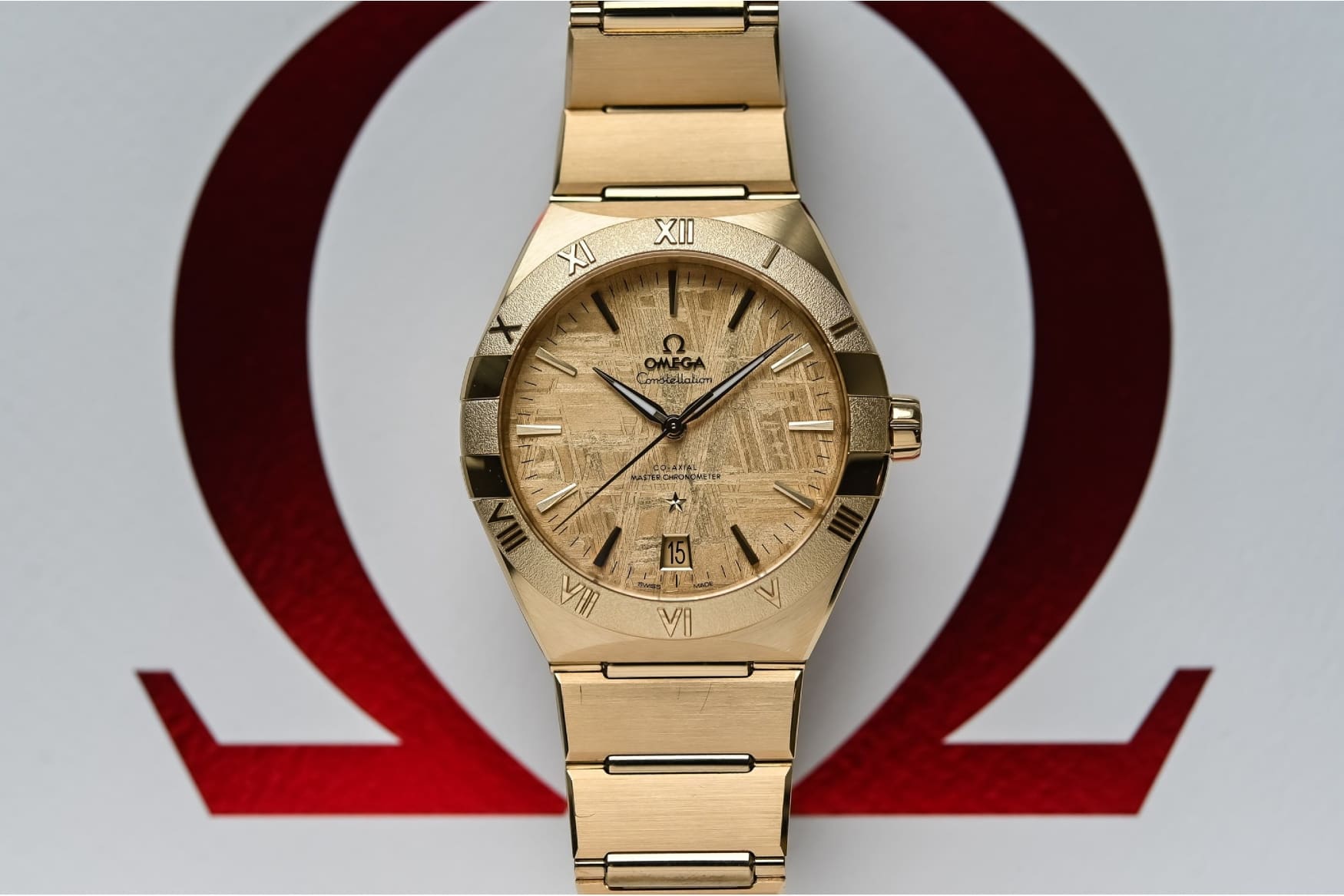
The reason why we’re making this comparison is twofold: firstly, both these watches were released within a week of each other; and secondly, because as Zach initially pointed out in his coverage of the Omega, both feature gadrooned, neoclassical aesthetics. The Omega’s dial might be executed significantly differently than the Piaget’s, but Piaget is well-known for their mastery of stone dials (including meteorite) – so this is a bit of a gauntlet throw-down, too. More on that in a bit.
Both also feature tastefully finished in-house movements with gold rotors; both feature integrated bracelets with large, single flat links and butterfly clasps; and both are (effectively) retro revivals: the Piaget more explicitly, granted, but the Constellation’s design hasn’t been significantly updated since 1995 with its design DNA still reflective of Carol Didisheim’s design of 1982. Of course, they’re both also fully 18ct yellow gold, with even their dials being imagined in gold.
Where each stands apart
They both have some key differences, however – other than just their price tags. The Omega is slightly larger and significantly thicker; the Omega features a seconds hand and a date window where the Piaget doesn’t; the Piaget has a micro-rotor movement where the Omega doesn’t; and the Omega has a significantly greater power reserve and boasts METAS certification. Both movements are finished nicely; the Piaget probably just pips the Omega in this regard.
The case and dial construction of the Piaget is significantly more complex than the Omega, too. The Polo 79’s dial is formed from a single piece of brushed gold with polished gold gadroons layered on top, with the case featuring an intricate fillet arrangement to produce the illusion that the case, dial and bracelet are all a contiguous structure. The Omega’s case and dial design, in comparison, is much more conventional (although it’s worth pointing out that the polished fillets of the Constellation are set using a similar technique to the Polo 79’s, the Polo 79 has many more fillets).
The Omega’s dial is far from conventional, however. Rather than being architecturally complex, it’s chemically complex, with the unique Widmanstätten patterns of its single-piece iron meteorite dial emphasised with a PVD 18ct yellow gold treatment, a technique seldom seen in watchmaking.
The verdict
The case for the Omega Constellation Meteorite Dial: Honestly, I was motivated to compare these two watches because I baulked at the cost of the Polo 79 – which is almost as expensive as the 222 it follows in the footsteps of (as of publishing, the 222 is A$123,000) – and then when I saw that this Omega is over 40% cheaper and achieves a similar look, it begs the question: why get the Piaget? Meteorite dials are also a byword for luxury, and in some ways, the Constellation’s dial is more dramatic than the Piaget’s. It also has the Piaget beat as far as movement specs are concerned: micro-rotors might be nice, but the calibre 8901 in the Omega is much more accurate.
The case for the Piaget Polo 79: There’s no getting around the fact that the Piaget is the more svelte of the two here. It’s smaller, significantly thinner and arguably dressier than the Omega, which straddles the line between a sports watch and a dress watch. Piaget also arguably has more brand cache than Omega (and that’s not a trivial justification), and there’s nothing enthusiasts like more than a micro-rotor. It’s a different level of watchmaking here, reflective of Piaget’s status as a jeweller as well as a watchmaker.
My pick: It’s a tricky one. I’m not someone who would probably ever wear a hefty yellow gold watch and bracelet in any case, but if money was no object, I’d be lying if I said I didn’t want the Piaget. The problem is that money is the object. I think it’s mildly outrageous that the Polo 79 is almost as expensive as the 222, which is a much more famous watch from a Holy Trinity brand. But Piaget is really having a moment right now: there’s never been more interest in vintage Piaget, especially vintage gold Piaget, so the Polo 79 has arrived at the perfect time. I want to get on the hype train, and I think other luxury watch shoppers will too.




